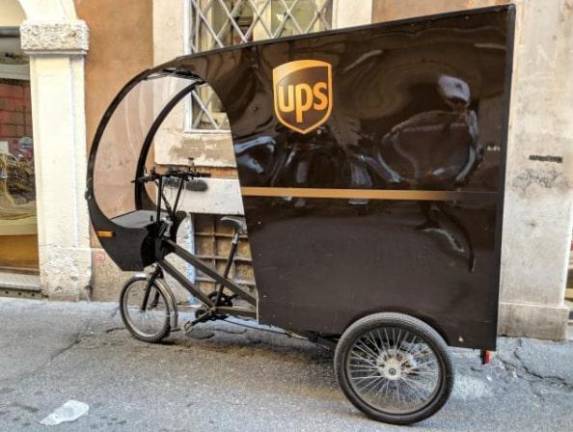CB8 Considers DOT’s Cargo Bike Rules, With Public Comment Period Coming to a Close
Familiar commenters, some seemingly unaware of a cargo bike roll-out that has been in pilot mode since 2019, lined up to either condemn the green commercial transport alternatives as a threat to safety...or a boon to one. The same generational split that often defines e-bike discourse was on full display.

As the one-month public comment period on DOT’s full authorization of cargo pedal-assist bikes comes to a close on September 14, members of Community Board 8’s Transportation Committee convened on September 6 to hash out the pros and cons of the vehicles. In short, they appeared to fall neatly in one camp or the other.
According to the DOT, the pedal-assist cargo bikes are “designed to make deliveries safer and more sustainable by reducing the number of delivery trucks on New York City streets.” The agency further claims that in 2022 alone, “cargo bikes made more than 130,000 trips delivering over 5 million packages, resulting in the reduction of over 650,000 metric tons of CO2 emissions, and demonstrating their effectiveness as a last-mile delivery mode.” In fact, they’ve been on the streets since a pilot program started in 2019, although it seems that the new rules would make the bikes bigger; they are now specifically intended to be 4 ft. wide and 10 ft. long.
For certain UES residents or board members calling into the meeting, bigger clearly means worse. In fact, a few commenters expressed exasperation that the cargo bikes exist at all.
Andrew Fine, a member of the public and a persistent critic of e-bikes writ large, set the tone of the naysayers by quipping that “what they’re looking to do is to redefine the term ‘bicycle.’” He provocatively implied that corruption might be occurring, claiming that “I’m not sure what the impetus was here, or who’s nest was getting feathered.” He didn’t elaborate further.
Fine also made clear that he believes actual full-sized UPS trucks are preferable for delivery needs, and that the DOT will be drastically reducing the amount of transported cargo. In fact, UPS have been using their own version of pedal-assisted cargo bikes since at least 2018, which have since spread to New York City.
CB8 member Alida Camp, rather than disputing the cargo capacity of the bikes, proclaimed she feared for the safety of pedestrians near deliveries. To this end, she laid out a colorful scenario involving one of the vehicles “careening down the sidewalk,” its velocity increased due to being jammed full of packages.
“What about the babies, and the toddlers, and the little ones on scooters, and the dogs, and the elderly people, and the walkers, and the wheelchairs, or just the people carrying groceries or going out for a walk? It seems so incredibly dangerous,” she concluded. Camp believed it was was a mere matter of physics.
Board member John McClement was devilishly pithy in his self-evident condemnation of the vehicles. “When we’re reminded of good intentions, I remember what H.L. Mencken said: ‘The road to hell is paved with good intentions,” he remarked.
Naturally, some folks weren’t up in arms about the bikes, beginning with younger board member Juno Chowla-Song. Mentioning that she had done volunteer work with a 36-inch-wide bike and found using the sidewalk exceedingly difficult, she expressed her belief that the newer 48-inch-wide bikes would remain on the road, where the riders “are gonna be putting themselves in danger.”
The solution for Chowla-Song was to expand bike lanes rather than condemn the vehicles themselves.
Dylan Geronimo Kennedy, a cyclist that has served as a foil to the likes of Fine or Camp during board meetings, relished in his role. Picking up on the physics thread that Camp had initially utilized, he arrived at a diametrically opposite conclusion.
“Returning to the physics point, these are replacing even larger vehicles. People get hit all the time by larger delivery vehicles. We have data backing up that these collisions with larger vehicles do result in fatalities, at a much greater rate,” he noted.
As the meeting wound down, members such as Fine thanked CB8 for bringing the DOT’s new roll-out to his attention. After all, he had summarized his appreciation for the public platform in his earlier outpouring: “Thank you for hearing me out. I needed that.”